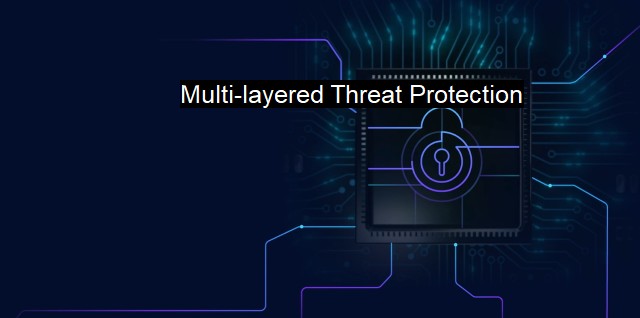What is Multi-layered Threat Protection?
Securing the Cyberspace: The Power of Multi-Layered Threat Protection in the Age of Advanced Cyber Attacks
"Multi-layered Threat Protection" refers to a comprehensive cybersecurity strategy characterized by defense at multiple levels. The strategy aims at providing robust protection from different kinds of potential threats that may infiltrate a system at various levels and wreak havoc. Combining the protocols of several independent systems lets the defense operate seamlessly, thereby mitigating risks and impending threats.To fully comprehend the essence of a Multi-layered Threat Protection approach, it is worthwhile to perceive a computer system or network as an urban city. In a city, one would find a myriad of barriers for unwanted external factors, such as a fortified outer wall, city police, and home security systems. If an undesirable element were to cross the city wall, they would then face the city police, and the home security system would prevent intrusion into houses. Similarly, a Multi-layered Threat Protection system provides comprehensive levels of security checks and barriers with each layer handling a distinct form of threat accordingly.
The first layer of this system typically includes a firewall, effectively acting as the first line of defense for any network. The firewall disallows unnecessary and suspicious external communication from reaching out to internal systems. it limits and navigates traffic based on security parameters, acting as a rigid gatekeeper against numerous routine threats.
While a firewall regulates communication traffic chiefly, security at an app level presents a different, essential layer of Multi-layered Threat Protection. Ideally, security measures should block all programs remotely dispatched by malware or dangerous codesets neatly embedded in these applications. Therefore, secure computing includes vigilance at the app-level, which is provided by today's cutting-edge antivirus solutions. They identify malicious lines of code persistently trying to sneak past the external layers.
But as cyber threats are increasingly sophisticated, traditional antivirus alone can't counter these threats effectively. Hence, the third layer includes a more advanced software primarily designed to tackle sophisticated malware, namely, anti-malware software. Unlike conventional antivirus solutions, anti-malware is equipped to handle modern threats from ransomware, zero-day exploits, and file-less attacks.
Further, Multi-layered Threat Protection also encapsulates encryption software as another crucial layer. Encryption is an efficient defensive tool for the stored and shared information. Encrypting the data makes it inaccessible and unreadable to anyone without the right key. Consequently, even if a breach still happens, the cyber thief would find the encrypted data useless without the appropriate decryption key.
The software updates represent another important stratum for Multi-layered Threat Protection. Regular updating and patch management ensure that any discovered vulnerabilities within the system are promptly addressed before mischievous elements exploit them, which is an ongoing proactive defense.
The last layer, typically the most crucial of all, is education concerning cybersecurity greatness and threat cognizance. Ensuring that end-users are cognizant about how threats surface and where they come from enables them to be better prepared for handling them effectively.
Multi-layered Threat Protection operates as a panoptic defense system against the multitude of cyber threats out there. The synergy of several measures and mechanisms, each addressing a different yet fundamental aspect of the entire cybersecurity architecture, creates an almost unassailable barrier against potential breaches. Each layer of protection is crucial and strengthens the overall system robust¬ness, providing an end-to-end shield in the cyber world.

Multi-layered Threat Protection FAQs
What is multi-layered threat protection?
Multi-layered threat protection is a cybersecurity approach that involves using multiple security measures to provide comprehensive protection against various types of cybersecurity threats.What are the different layers of multi-layered threat protection?
The different layers of multi-layered threat protection include antivirus software, firewalls, intrusion detection and prevention systems, content filtering, and behavioral analysis.What are the benefits of using multi-layered threat protection?
The benefits of using multi-layered threat protection include better protection against various types of cybersecurity threats, improved detection and response times, reduced risk of data loss or theft, and increased overall security posture.How can multi-layered threat protection be implemented in an organization?
Multi-layered threat protection can be implemented in an organization by selecting and integrating various security measures, such as antivirus software, firewalls, intrusion detection and prevention systems, content filtering, and behavioral analysis. It's also important to monitor and regularly update these security measures to ensure that they continue to provide adequate protection against emerging threats.| | A | | | B | | | C | | | D | | | E | | | F | | | G | | | H | | | I | | | J | | | K | | | L | | | M | |
| | N | | | O | | | P | | | Q | | | R | | | S | | | T | | | U | | | V | | | W | | | X | | | Y | | | Z | |
| | 1 | | | 2 | | | 3 | | | 4 | | | 7 | | | 8 | | |||||||